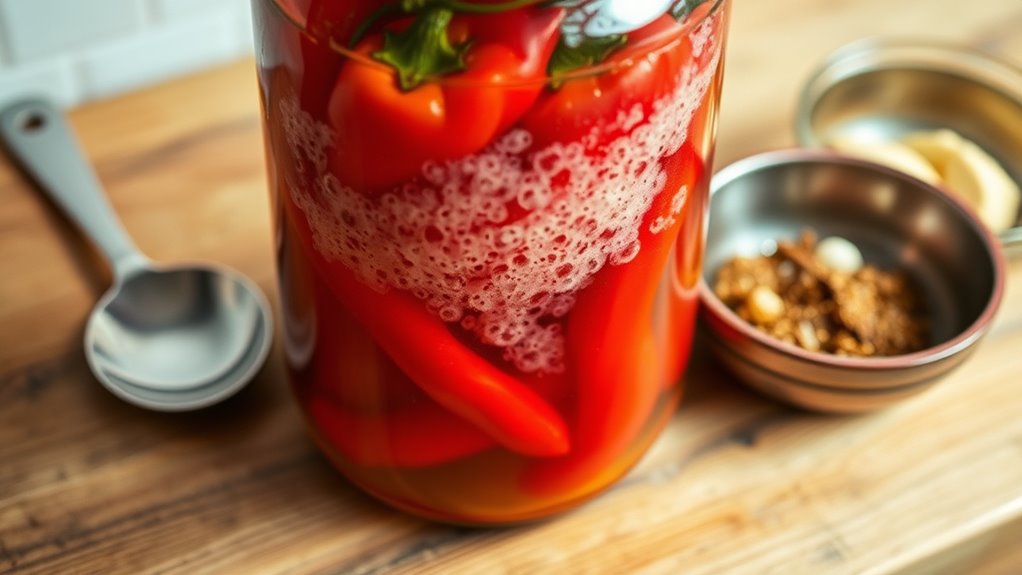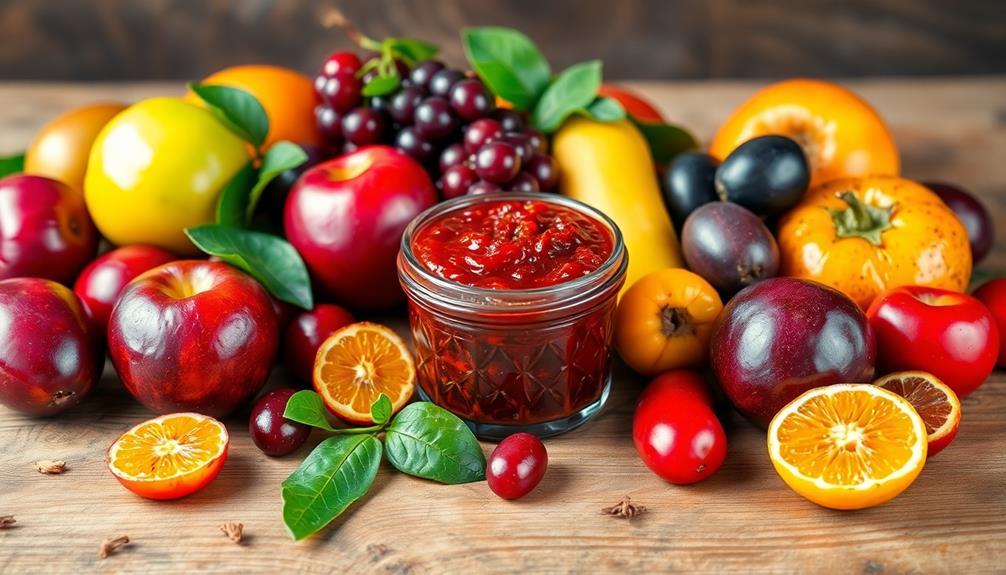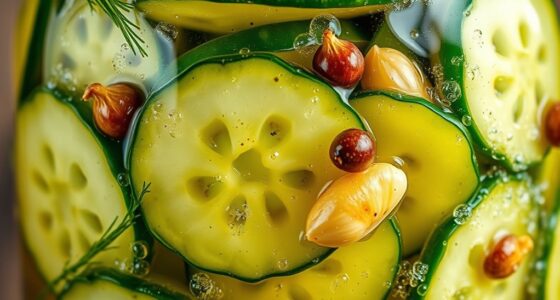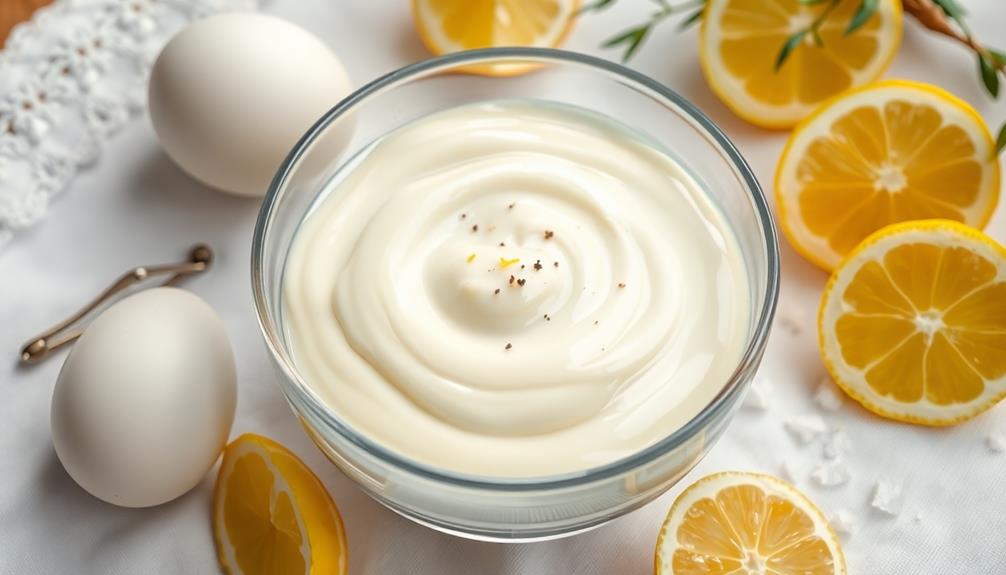To safely ferment hot sauce at home, keep your workspace and utensils very clean and use high-quality, non-iodized salt (2-3%) to inhibit spoilage. Maintain a steady temperature of 65-75°F, ensuring your mixture stays submerged under brine to avoid mold. Patience and consistent monitoring help develop complex flavors without risks. Proper storage and inspection are essential for safety and taste—continue exploring the best tips to achieve foolproof, delicious homemade hot sauce.
Key Takeaways
- Use clean, airtight containers and non-iodized salt at 2-3% of vegetable weight to prevent contamination.
- Maintain a consistent fermentation temperature between 65-75°F for safe, flavor-rich hot sauce development.
- Submerge peppers fully in brine using weights to inhibit mold and harmful bacteria growth.
- Taste-test periodically and extend fermentation for 1-4 weeks to achieve complex, safe flavors.
- Store finished hot sauce in the refrigerator, ensuring it remains submerged and properly sealed to prevent spoilage.
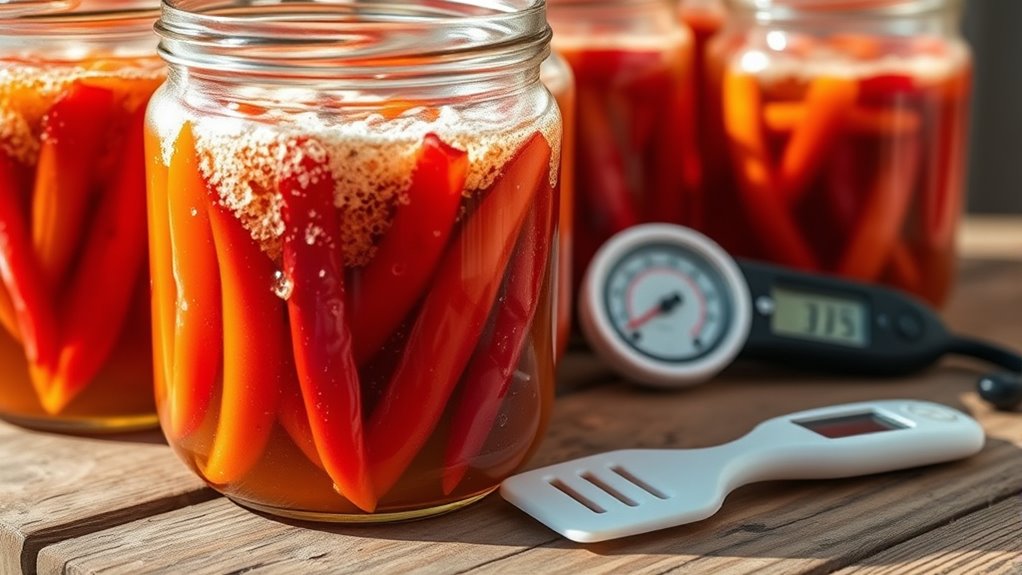
Fermenting hot sauce at home is an easy and rewarding way to create a flavorful, probiotic-rich condiment tailored to your taste. As you commence on this process, one of your top priorities should be fermentation safety. Ensuring a safe environment prevents harmful bacteria from taking hold and spoiling your hot sauce. Keep your workspace and utensils clean, and use high-quality ingredients. Salt plays a key role in fermentation safety by creating an inhospitable environment for pathogens. Stick to recommended salt concentrations—usually around 2-3% of the weight of your vegetables—and avoid using iodized salt, which can inhibit fermentation. Additionally, always use airtight containers designed for fermentation, and check for signs of mold or off smells before proceeding. If anything seems off, it’s best to discard and start fresh. Proper sanitation is essential to prevent contamination and ensure successful fermentation. Incorporating food safety practices can further minimize risks during home fermentation. Maintaining the correct fermentation temperature is also vital for preventing spoilage and promoting healthy bacterial growth. Proper temperature control is crucial, as fluctuations can hinder fermentation efficiency. Flavor development is another essential aspect of home fermentation. As your hot sauce ferments, the natural enzymes and beneficial bacteria transform the ingredients, deepening the flavor profile. You’ll notice it becoming more complex, with a tangy, savory note that can’t be achieved with store-bought sauces. To enhance flavor development, consider adding spices or herbs like garlic, cumin, or coriander during the initial stages. Keep your ferment at a consistent temperature—ideally between 65-75°F—since temperature fluctuations can slow down or hinder proper fermentation. Patience is key; most hot sauces take anywhere from one to four weeks to develop the desired flavor. During this time, taste-test periodically by opening the lid briefly to release gases, then resealing. This helps you monitor progress and prevent pressure buildup. Proper temperature control is crucial for optimal fermentation. Another tip for successful fermentation is to keep the mixture submerged in its brine. Exposure to air can lead to mold or undesirable bacteria growth, compromising safety and flavor. Use weights or a clean, non-reactive lid to keep everything submerged. Once fermentation is complete, you can blend the hot sauce to your preferred consistency and strain out any solids. Remember, the flavors will continue to develop as it sits in the refrigerator, so don’t rush to bottle it too early. Contamination prevention is vital to maintaining a safe fermentation environment. With proper attention to fermentation safety and a focus on flavor development, you’ll end up with a vibrant, tangy hot sauce that’s uniquely yours. This process not only guarantees a delicious condiment but also offers a satisfying way to harness probiotic benefits at home.
Frequently Asked Questions
How Long Does Homemade Fermented Hot Sauce Typically Last?
Your homemade fermented hot sauce typically lasts about 6 months to a year when stored properly. Keep it refrigerated to extend its storage duration and prevent spoilage. Watch for spoilage indicators like foul smell, mold, or discoloration—these signs mean it’s time to discard the sauce. Proper storage and regular inspection help you enjoy your fermented hot sauce safely for as long as possible.
Can I Use Any Type of Chili for Fermentation?
Imagine stumbling upon a vibrant chili variety that sparks your curiosity; you might wonder if it’s suitable for fermentation. You can use many chili varieties, but remember, different peppers influence fermentation consistency and flavor. Hot peppers like habaneros or jalapeños work well, adding distinct heat and flavor. Just avoid overly watery or moldy peppers, and you’ll guarantee a successful, tasty home-fermented hot sauce.
What Signs Indicate My Hot Sauce Has Spoiled?
You’ll know your hot sauce has spoiled if you notice mold, an off or sour smell, or a slimy texture. Always follow proper storage tips by keeping it refrigerated and sealing it tightly. Watch for flavor changes—sourness beyond normal fermentation, or any unusual tastes. If anything seems off, it’s best to discard it to avoid health risks. Trust your senses to make sure your hot sauce stays fresh and delicious.
Is There a Way to Speed up the Fermentation Process?
If you want to speed up fermentation, try using fermentation speed techniques like increasing the temperature slightly or adding a starter culture. Keep your hot sauce at around 75-85°F to accelerate fermentation without risking spoilage. You can also chop ingredients smaller to expose more surface area. Just remember, while these methods can quicken the process, maintaining proper hygiene guarantees safety and flavor quality.
How Do I Prevent Mold Growth During Fermentation?
Think of mold prevention like guarding a treasure—keep it sealed! To guarantee fermentation safety and prevent mold growth, always use a clean jar, submerge peppers fully, and remove any surface scum promptly. Use an airlock or loosely cover with a cloth to allow gases to escape while limiting oxygen exposure. Regularly check your ferment, and if mold appears, discard the batch to keep your hot sauce safe and delicious.
Conclusion
Now that you know how to safely ferment hot sauce at home, aren’t you excited to try it yourself? With just a few simple steps, you’ll create a flavorful, tangy condiment that beats store-bought options. Remember, patience is key, and trusting your senses will lead to the best results. So, why settle for bland when you can craft your own fiery masterpiece and add a personal touch to every meal?
